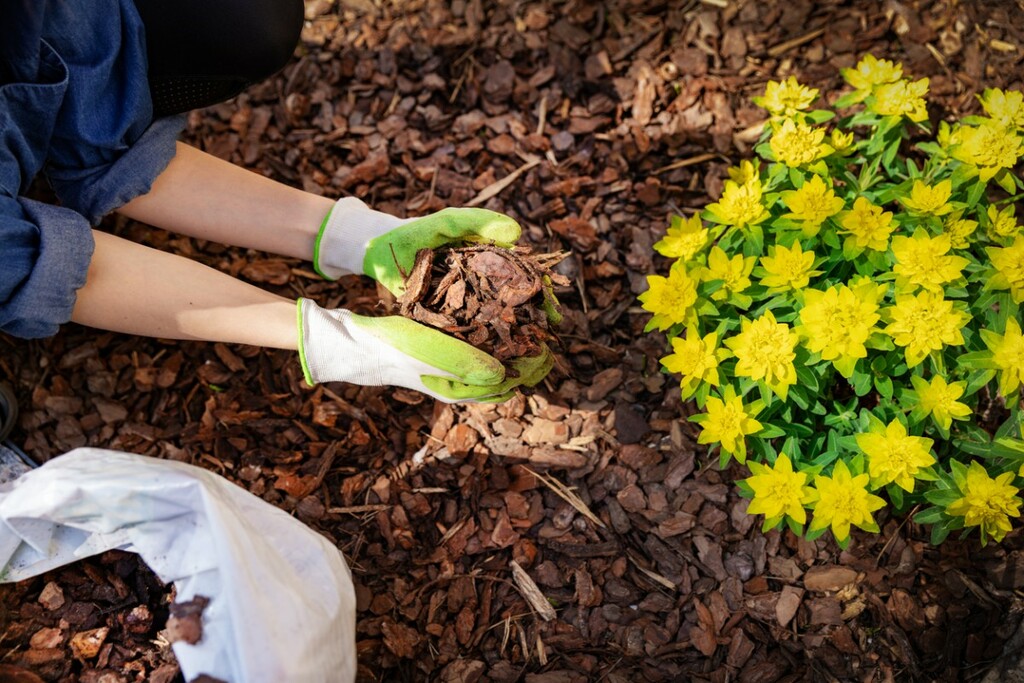
Maintaining perennial beds or hedges is long and tedious! Weeds find in this type of landscaping a breeding ground favorable to their growth. Laying mulch is an effective solution that will save you unnecessary time and effort. And the list of advantages is long: protection of the soil against sudden temperature changes, maintenance of humidity… In slate or natural bark, mulching even becomes decorative and fits perfectly into the overall atmosphere of your garden to to be discreet or, on the contrary, to highlight the massif.
Preparing to lay a mulch
Before laying any decorative mulch on an existing bed or at the foot of a hedge, it is essential to prepare the ground carefully. Start by eliminating all the weeds one by one (dandelions, couch grass, nettle, thistle, bindweed, etc.) by pulling them out with their roots. You can then decompact and aerate the soil with a towel. Finish by breaking up the clods and leveling with a rake.
At this stage, the installation of a mulching film, although not essential, is strongly recommended. The latter, made from biodegradable materials (crushed jute, cotton), hugs the ground perfectly and naturally prevents the regrowth of weeds by depriving them of light. Resistant over time, it nevertheless allows water to infiltrate and limits evaporation and rapid drying of the soil at the foot of the shrubs during episodes of high heat.
This film is very practical and effective but it is unfortunately not very aesthetic. Also, do not hesitate to cover it with a decorative mulch which will mask it pleasantly and embellish your bed.
Decorative and natural mulches for a chic garden!
Maritime pine bark: natural above all!
Maritime pine bark comes from the forest industry. The pieces of bark separated from the logs are washed then sorted and graded. This natural mulch therefore exists in different formats. Personally, I prefer to use small gauges that spread easily with a rake, in thin layers. Pine bark is an inconspicuous material, the brown color of which blends in well with the general tones of the garden and turns grayish as it ages.
Pine bark has the added benefit of being a biodegradable material that stimulates bacterial life while acidifying the soil. The bark is therefore a mulch to be reserved more particularly for beds of acidophilic plants, such as azaleas, rhododendrons and other heather plants.
A slate mulch, for a definitely chic bed!
Slate in pieces is a naturally chic material, which produces a very nice contrast effect spread out at the foot of immaculate white flowering shrubs. It durably protects the soil from the vagaries of the weather and is almost indestructible.
With a ferric composition, the slates release molecules of the metal into the earth over time. Plants, especially hydrangeas, will appreciate. The sustained blue color of their flowers is indeed subject to the iron content of the soil.
The dark tint of slate is also very useful for warming the ground from the first rays of the spring sun. Plants love it! This material finds its place in beds of heather earth, to create, for example, a corner of Japanese inspiration. It can also be spread around the base of shrubs in containers to offer effective protection to these plants which are more sensitive to the cold than those installed in the ground.
